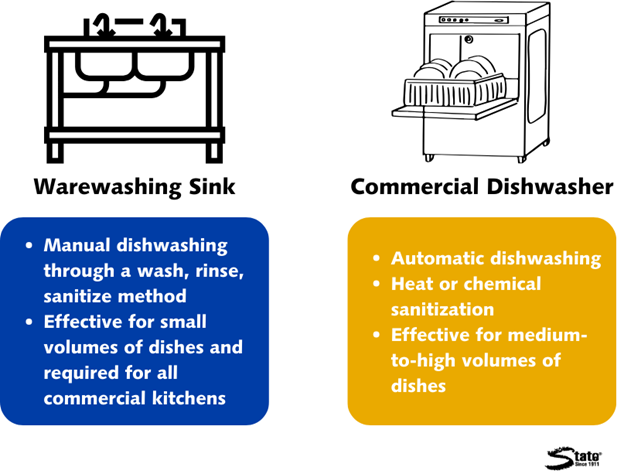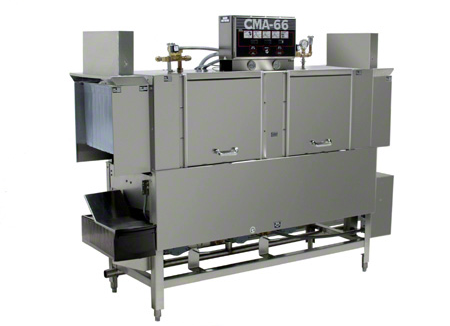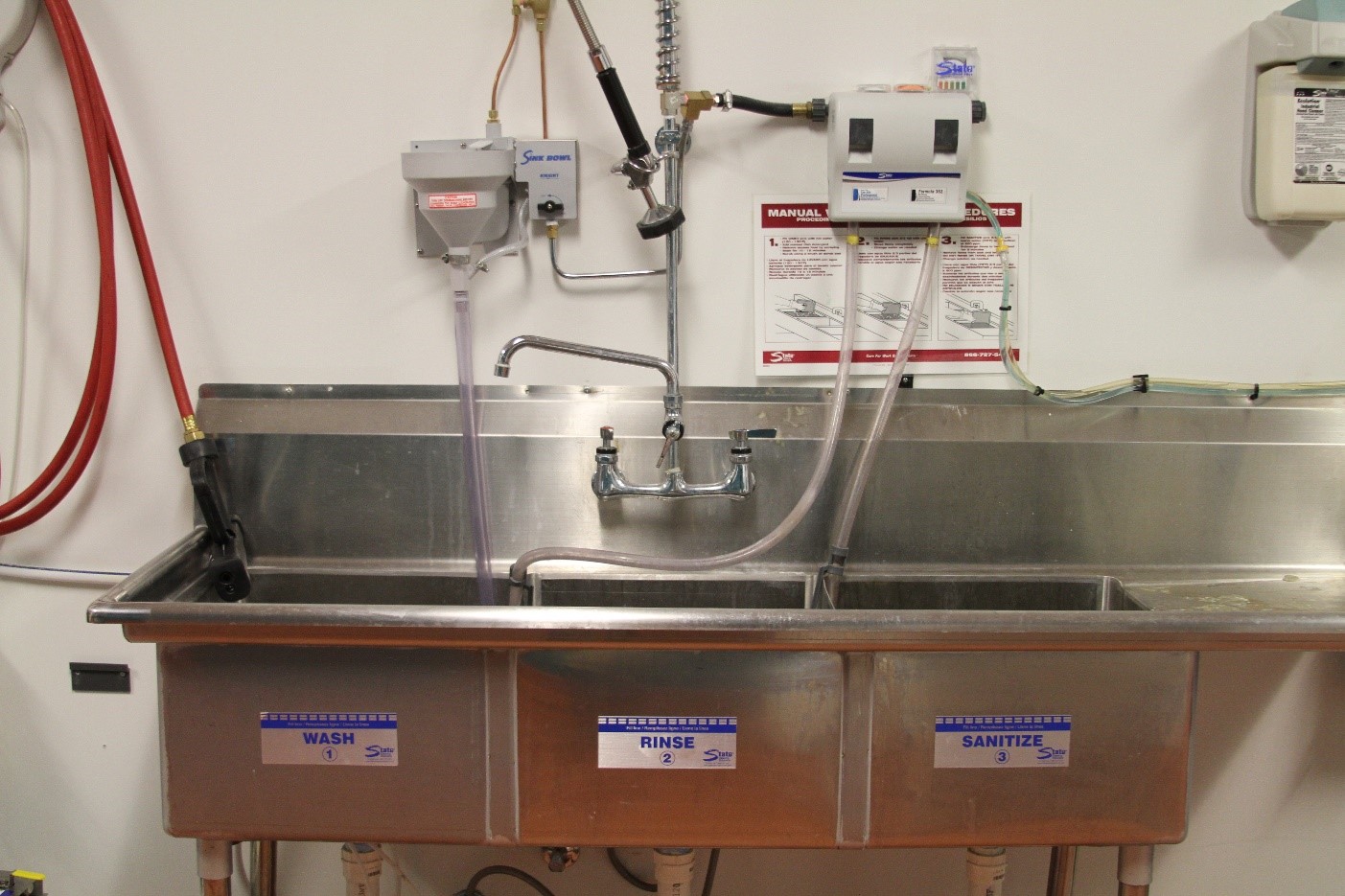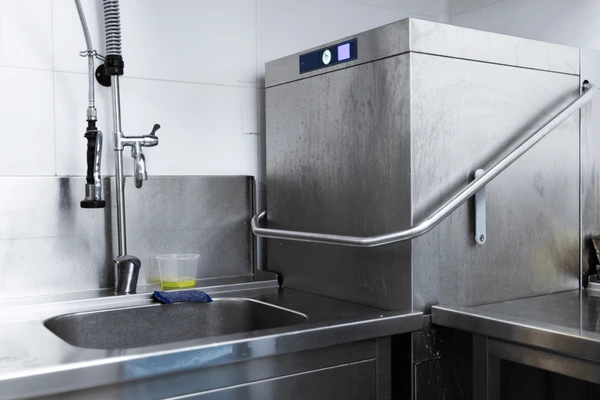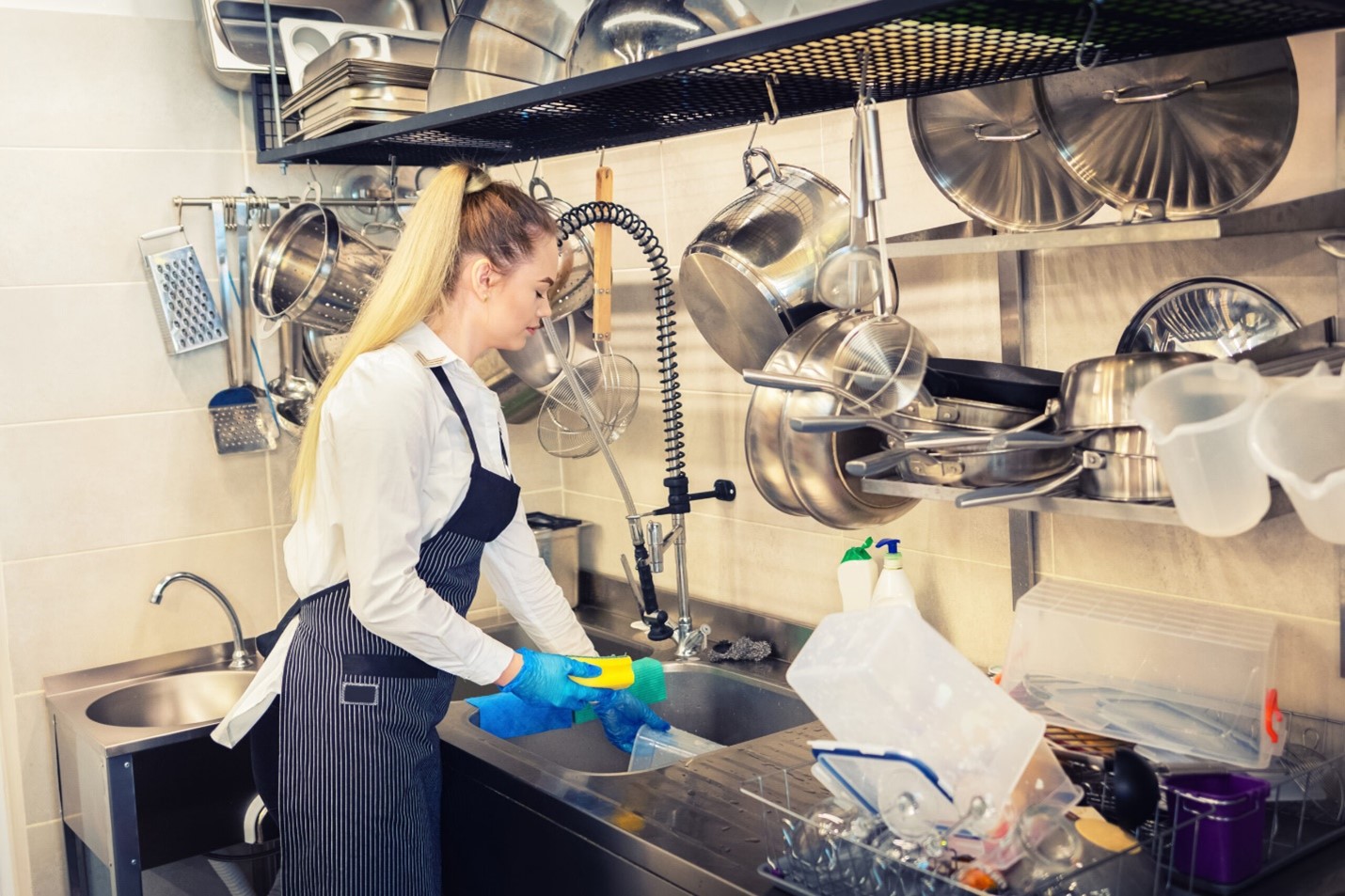At State Cleaning, we lease out, service, and provide chemicals for commercial dish machines. Commercial dishwashers aren’t usually considered a minor purchase, so we know that it’s important for you to do your research first in order to make the best selection for you.
To help you determine what your kitchen needs, we will explain manual warewashing, commercial dishwashers, when it’s time to add a dishwasher, and when it’s best to solely wash dishes by hand. After reading, you’ll know whether you need a dish machine or should stick to manual warewashing.
What is a Commercial Dishwasher?
A commercial dishwasher is used to automatically wash dishes in a facility’s kitchen. This means you simply load and unload the machine rather than doing dishes by hand. Dish machines can be selected to have many different features, with ranging options depending on if you want high-temp, low-temp, over-counter, under-counter, multiple dish racks, door type, carousel, and more.
In some machines, these features can be combined (e.g., you can have a high-temp door type machine), but in others, certain combinations aren’t possible (e.g., you can’t have an under-counter machine that washes multiple racks of dishes). Different features can significantly change the functionality of a dishwasher in your space and are therefore important to fully consider.
Even in this setup, you are required to have a three-compartment sink for manual warewashing. After all, you want to have dishwashing options if your machine is down for any reason—and you’ll need the sink to wash certain dishware that isn’t dishwasher-safe, such as pots and pans.
What is Manual Warewashing?
Meanwhile, manual warewashing involves solely using a three-compartment sink to wash dishes by hand. This sink has three sections: wash, rinse, and sanitize.
In the first compartment, the user will wash the dishes with hot water and a detergent. In the second compartment, the dishes are rinsed off. And in the third compartment, the dishes are submerged for at least 30 seconds (depending on the product used) in a chemical such as quat, which acts as a sanitizer. At the end, dishes are left on a rack to air dry. Maintaining temperatures of the hot water or sanitizer active level is critical for proper sanitization.
Again, it’s important to note that you must have a three-compartment sink for manual warewashing even if you also have a commercial dishwasher. This way, if something happens to your dishwasher or if you have items that aren't dishwasher-safe, your kitchen still has the ability to clean dishware.
When Should I Add a Commercial Dishwasher to My Kitchen?
Commercial dishwashers are usually sought because of how much time and energy they save. Therefore, they’re a must when you have a large volume of dishes.
Let’s say you own a restaurant that seats 150. Your kitchen will be piled up with hundreds of dishes during the Friday night dinner rush—with this happening constantly, there’s no way your staff will be able to keep up with it all. Instead, you would want an automatic option to help you stay on top of the chaos.
You would probably want this option even in slightly less busy settings too. Consider a nursing home with 30 beds. You might not need a multi-rack commercial dishwasher for mealtimes, but you might want an under-counter option so you aren’t spending hours on dishes several times a day.
Before selecting your commercial dishwasher, compare high-temp and low-temp options and ensure your kitchen can support your intended machine. High-temp dish machines require more breaker space and usually a vent hood, while low-temp machines can pose a problem for those concerned about chemical safety. Additionally, commercial dishwashers are costly to buy and lease and may not be worth it in smaller applications because of the higher price.
When Should I Stick to Manual Warewashing?
This being said, dishes should be done manually when you have a smaller volume of them.
Suppose that you own a boutique coffee shop that seats 20. People order mugs of chai lattes and croissants on small plates, and then, of course, you have dishes in the form of milk steamer cups, ingredient containers, and blender jars. Although tedious to wash, this amount of dishes would not warrant a commercial dishwasher. Additionally, it’s worth considering if you use any dishware that isn’t dishwasher-safe.
Instead, it would make sense to do dishes by hand in a warewashing sink. This is a more economical decision, especially in a facility where a big machine would be overkill or even not fit in the kitchen. With a warewashing sink, you’ll, of course, still need to pay for cleaning chemicals and hot water, but you’ll be saving money by not also having to rent or buy a dishwasher. However, it will take more of your staff’s time.
Commercial dishwashers can wash a load in just a few minutes while manual warewashing usually takes an average of 30–60 minutes. Depending on your number of dishes and budget, sticking solely to manual warewashing may still make more sense, but it’s important to consider whether the labor time is worth the cost savings.
Of course, if you have the space and budget and want to save as much time as possible, you can always add a dishwasher for extra help, but for settings with small quantities of dishes, it just makes more sense to stick to manual warewashing.

